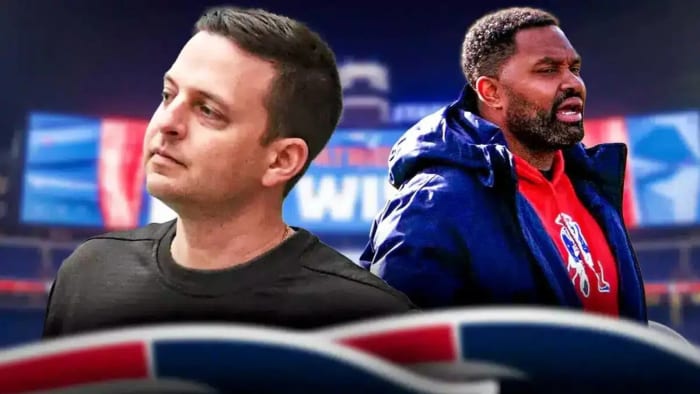Yes, a ruptured Achilles tendon can happen during many types of exercise or activity. But the fact that a ruptured Achilles tendon happened to Washington cornerback Sidney Jones at his Pro Day workout raises legitimate questions about whether unnecessary risks should be taken by players who are weeks away from securing their financial futures.
Players and their agents need to consider, on a player by player basis, whether and to what extent the player should participate in any workouts prior to the draft. The threshold question is whether to attend the Senior Bowl, which consists of multiple practices and one final game for which college football players don’t get paid.
Then comes the Scouting Combine, followed by the Pro Day workout. After that, a series of private workouts for interested teams.
The question of each player, and his agent, is to determine the point at which the hay is in the barn. Currently, it seems like too few players and agents are willing to draw the line and say “enough is enough.”
The best place to start is the private workouts. In theory, a player could do up to 32 of them. The better regarded the player is, however, the less important the private workouts become.
None of it is critically important. As one source explained it, between 70 and 80 percent of the evaluation of a player happens via his college game tape.
So why do teams look for more? Because they can. The players are nothing more than a commodity. If one out of hundreds tears an Achilles tendon or rips apart an ACL during a pre-draft workout, it’s a miniscule price to pay for getting what they all covet — maximum information about as many prospects as possible.
As a result, teams resent the notion of not having all of the data that they think they need before engaging in a process that, in hindsight, looks more like a crapshoot than it does a scientific exercise. Threats have been made in the past not to draft a player who chooses to say no. And, of course, those players still get drafted right about where their talent as demonstrated at the college level suggests they should.
The entire NFL draft complex, both teams and media members who primarily if not exclusively focus covering on the draft, have a vested interest in ensuring that first-round prospects don’t become fully self-aware and choose to protect themselves from unnecessary pre-draft physical risks. In the end, though, teams will draft the best players regardless of whether those players choose to play the pre-draft game, because teams know that if they pass on a highly-talented player, one of their competitors won’t.
 Re: Draft 2017 Uto 07 Mar 2017, 15:31
Re: Draft 2017 Uto 07 Mar 2017, 15:31

 Re: Draft 2017 Sre 08 Mar 2017, 01:08
Re: Draft 2017 Sre 08 Mar 2017, 01:08

 Re: Draft 2017 Sre 08 Mar 2017, 08:29
Re: Draft 2017 Sre 08 Mar 2017, 08:29

 Re: Draft 2017 Sre 08 Mar 2017, 08:33
Re: Draft 2017 Sre 08 Mar 2017, 08:33


 Re: Draft 2017 Sre 08 Mar 2017, 09:03
Re: Draft 2017 Sre 08 Mar 2017, 09:03


 Re: Draft 2017 Pet 10 Mar 2017, 11:38
Re: Draft 2017 Pet 10 Mar 2017, 11:38


 Re: Draft 2017 Pet 10 Mar 2017, 11:52
Re: Draft 2017 Pet 10 Mar 2017, 11:52

 Re: Draft 2017 Pet 10 Mar 2017, 13:04
Re: Draft 2017 Pet 10 Mar 2017, 13:04


 Re: Draft 2017 Ned 12 Mar 2017, 16:53
Re: Draft 2017 Ned 12 Mar 2017, 16:53


 Re: Draft 2017 Ned 12 Mar 2017, 17:36
Re: Draft 2017 Ned 12 Mar 2017, 17:36
 Re: Draft 2017 Ned 12 Mar 2017, 17:42
Re: Draft 2017 Ned 12 Mar 2017, 17:42

 Re: Draft 2017 Ned 12 Mar 2017, 18:58
Re: Draft 2017 Ned 12 Mar 2017, 18:58


 Re: Draft 2017 Ned 12 Mar 2017, 20:17
Re: Draft 2017 Ned 12 Mar 2017, 20:17


 Re: Draft 2017 Ned 12 Mar 2017, 20:19
Re: Draft 2017 Ned 12 Mar 2017, 20:19


 Re: Draft 2017 Ned 12 Mar 2017, 20:19
Re: Draft 2017 Ned 12 Mar 2017, 20:19


 Re: Draft 2017 Ned 12 Mar 2017, 22:07
Re: Draft 2017 Ned 12 Mar 2017, 22:07


 Re: Draft 2017 Pon 13 Mar 2017, 09:11
Re: Draft 2017 Pon 13 Mar 2017, 09:11


 Re: Draft 2017 Pon 13 Mar 2017, 10:56
Re: Draft 2017 Pon 13 Mar 2017, 10:56


 Re: Draft 2017 Pon 13 Mar 2017, 11:39
Re: Draft 2017 Pon 13 Mar 2017, 11:39


 Re: Draft 2017 Pon 13 Mar 2017, 11:41
Re: Draft 2017 Pon 13 Mar 2017, 11:41
 Re: Draft 2017 Pon 13 Mar 2017, 12:26
Re: Draft 2017 Pon 13 Mar 2017, 12:26

 Re: Draft 2017 Pon 13 Mar 2017, 12:27
Re: Draft 2017 Pon 13 Mar 2017, 12:27


 Re: Draft 2017 Pon 13 Mar 2017, 12:34
Re: Draft 2017 Pon 13 Mar 2017, 12:34

 Re: Draft 2017 Pon 13 Mar 2017, 21:11
Re: Draft 2017 Pon 13 Mar 2017, 21:11

